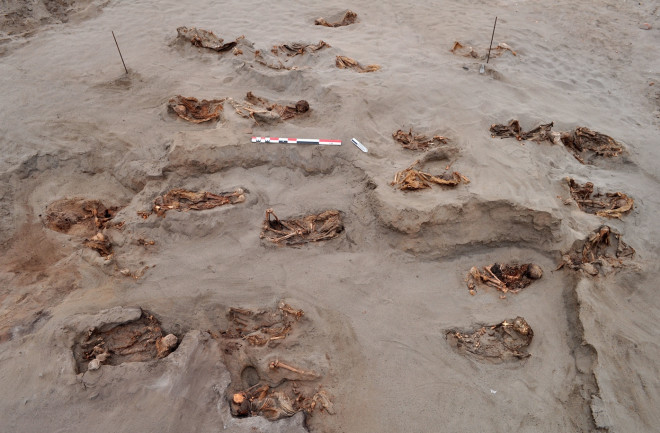The question haunts a seaside burial in northern Peru, where hundreds of remains from the largest-known mass child sacrifice in the Americas were found. The site, known as Huanchaquito-Las Llamas, dates back some 550 years to when the region was part of the Chimú Empire, which flourished between the 11th and 15th centuries.
Why Did the Ancient Chimú Civilization Sacrifice Hundreds of Young Lives?
A mass sacrifice of children and llamas 550 years ago may have been a desperate attempt to appease the gods in the wake of heavy rain and flooding.
Feb 10, 2020 6:00 PMApr 18, 2020 9:28 PM

After the Chimú children were sacrificed, their remains were arranged in groups of three by chronological age, often resting on their backs or sides with their legs flexed. Children were placed facing northwest, toward the ocean. The llama bodies were placed on top of or next to them, facing east toward the Andes Mountains. (Credit: Prieto et al. 2019 PLoS ONE)
Newsletter
Sign up for our email newsletter for the latest science news
Coastal Peru’s arid climate and salty soil helped preserve the bodies, retaining details that show some children had their faces painted with red cinnabar; others wore cotton headdresses. (Credit: John Verano)
0 free articles left
Want More? Get unlimited access for as low as $1.99/month
Stay Curious
Sign up for our weekly newsletter and unlock one more article for free.
View our Privacy Policy
Want more?
Keep reading for as low as $1.99!
Already a subscriber?
Find my Subscription
More From Discover
Stay Curious
Subscribe
To The Magazine
Save up to 40% off the cover price when you subscribe to Discover magazine.
Copyright © 2025 LabX Media Group
